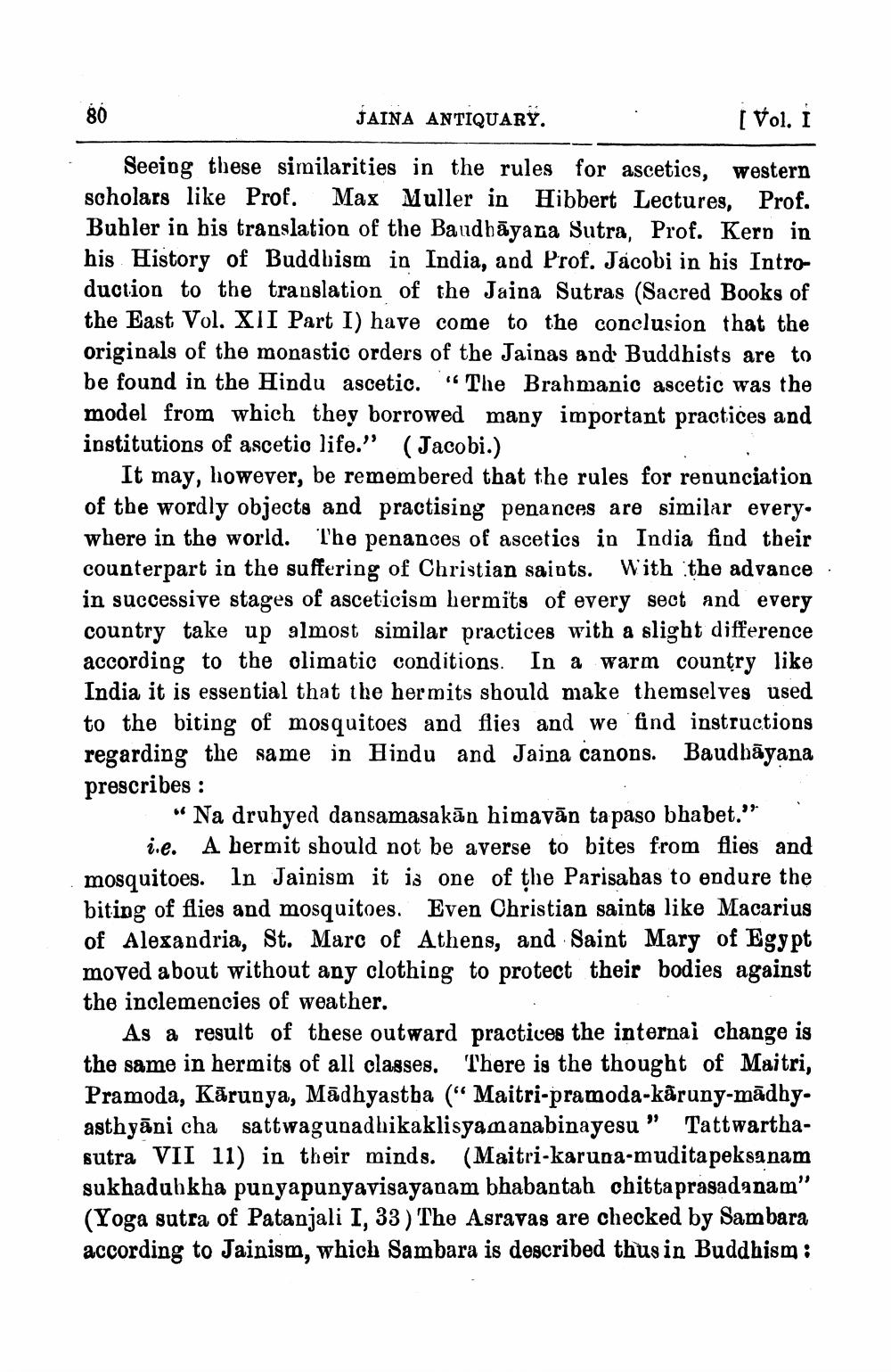________________
80
JAINA ANTIQUARÝ.
[Vol. I Seeing these similarities in the rules for ascetics, western scholars like Prof. Max Muller in Hibbert Lectures, Prof. Buhler in his translation of the Baudhāyana Sutra, Prof. Kern in his History of Buddhism in India, and Prof. Jacobi in his Introduction to the translation of the Jaina Sutras (Sacred Books of the East Vol. XII Part I) have come to the conclusion that the originals of the monastic orders of the Jainas and Buddhists are to be found in the Hindu ascetic. "The Brahmanic ascetic was the model from which they borrowed many important practices and institutions of ascetio life." (Jacobi.)
It may, however, be remembered that the rules for renunciation of the wordly objects and practising penances are similar every. where in the world. The penances of ascetics in India find their counterpart in the suffering of Christian saints. With the advance in successive stages of asceticism hermits of every sect and every country take up almost similar practices with a slight difference according to the climatic conditions. In a warm country like India it is essential that the hermits should make themselves used to the biting of mosquitoes and flies and we find instructions regarding the same in Hindu and Jaina canons. Baudhāyana prescribes :
“Na druhyed dansamasakān himavān ta paso bhabet."
ie. A hermit should not be averse to bites from flies and mosquitoes. In Jainism it is one of the Parisahas to endure the biting of flies and mosquitoes. Even Christian saints like Macarius of Alexandria, St. Marc of Athens, and Saint Mary of Egypt moved about without any clothing to protect their bodies against the inclemencies of weather.
As a result of these outward practices the internai change is the same in hermits of all classes. There is the thought of Maitri, Pramoda, Kārunya, Mādhyastba (“Maitri-pramoda-käruny-mādbyasthyāni cha sattwagunadhikaklisyamanabinayesu” Tattwarthasutra VII 11) in their minds. (Maitri-karuna-muditapeksanam sukhadubkha punyapunyavisayanam bhabantah chittaprasadanam" (Yoga sutra of Patanjali I, 33) The Asravas are checked by Sambara according to Jainism, which Sambara is described thus in Buddhism:




